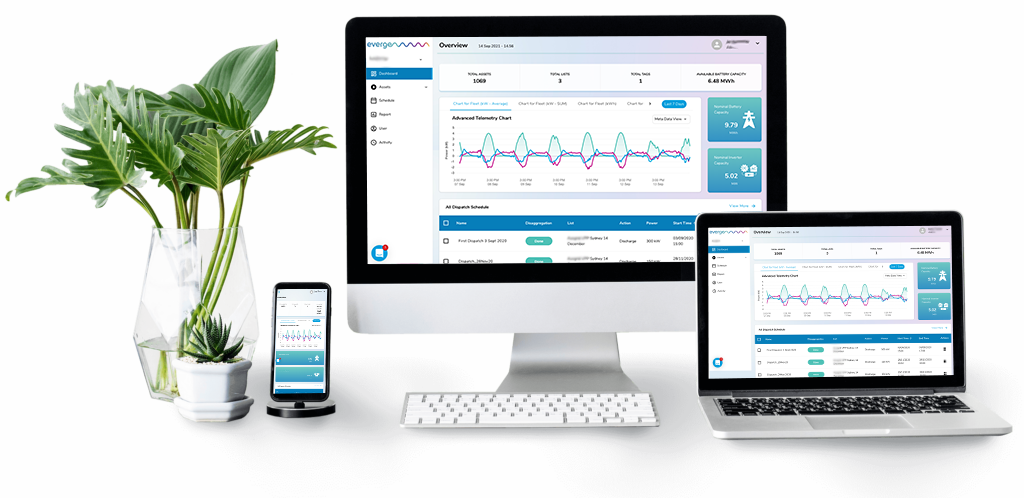DERMS
Distributed Energy Resource Management System
What Is A Distributed Energy Resources Management System (DERMS)?
A distributed energy resource management system (DERMS) is a software platform used to manage distributed energy resources (DER). This might include rooftop solar paired with home and commercial behind-the-meter batteries, or a fleet of electric vehicles to deliver critical grid stability and services, and balance demand.
Evergen’s DERMS platform allows Network Operators and Energy Retailers to manage a fleet of DER in real time, big and small, to support grid operations and manage market exposure through an easy-to-use software platform.
Single pane visibility over a fleet of batteries with multiple user access
Aggregate, monitor, dispatch and control hundreds or thousands of DER with cloud based technology
Configurable dashboards, with the ability to drill down on each individual DER, including site level system state, power, voltage and frequency telemetry
Readiness for orchestration without the need to access customers’ premises and install any additional hardware
Used across customer, utility and market applications

Evergen DERMS provides single pane visibility over a fleet of batteries, with some of the top features being:
Weather sensitive generation forecasts
Forecast demand
Model asset limitations
Asset monitoring
Scheduling dispatch events
Settlement reporting
Household and load metrics
Site-level telemetry
(including voltage, power factor, frequency)
